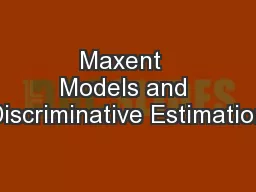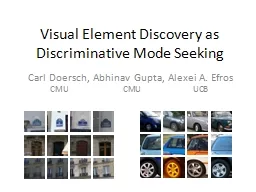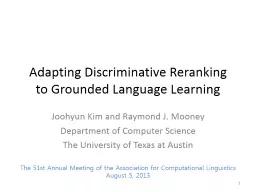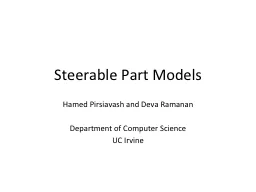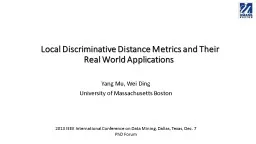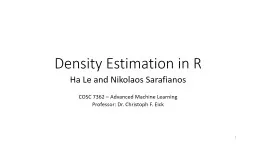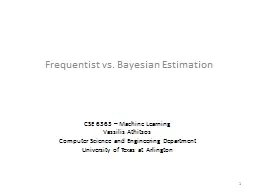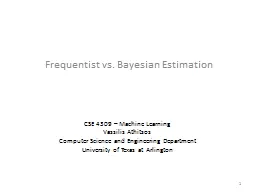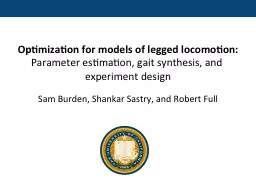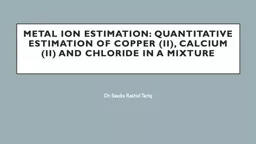PPT-Maxent Models and Discriminative Estimation
Author : ellena-manuel | Published Date : 2018-10-31
Generative vs Discriminative models Christopher Manning Introduction So far weve looked at generative models Language models Naive Bayes But there is now much use
Presentation Embed Code
Download Presentation
Download Presentation The PPT/PDF document "Maxent Models and Discriminative Estima..." is the property of its rightful owner. Permission is granted to download and print the materials on this website for personal, non-commercial use only, and to display it on your personal computer provided you do not modify the materials and that you retain all copyright notices contained in the materials. By downloading content from our website, you accept the terms of this agreement.
Maxent Models and Discriminative Estimation: Transcript
Download Rules Of Document
"Maxent Models and Discriminative Estimation"The content belongs to its owner. You may download and print it for personal use, without modification, and keep all copyright notices. By downloading, you agree to these terms.
Related Documents

